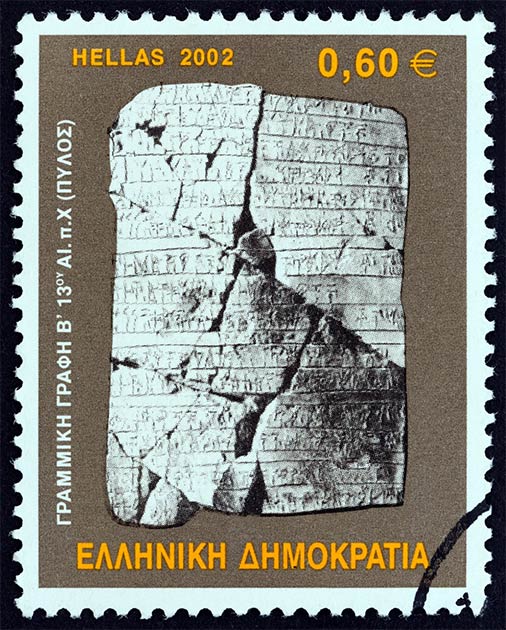A wildfire at Mycenae has caused a major archaeological panic in Greece. Greek fire fighters equipped with nine fire engines, two planes and a helicopter struggled to save the ancient citadel of Mycenae from the destructive flames of an out-of-control wildfire. The Bronze Age stronghold of Mycenae in ancient Greece was the center of the Mycenaean civilization from approximately 1600-1100 BC. According to a press release by Agence France-Presse , the wildfire at Mycenae started in the afternoon of August 30, near the tomb of Agamemnon, the king of Mycenae who was killed by his wife following the Trojan war .
The Extent And Danger Of The 2020 Wildfire At Mycenae
While wildfires in California are currently demanding round-the-clock attention from 16,000 firefighters, the wildfire at Mycenae is being tackled by “nine fire engines, two planes and one helicopter.” And according to local media sources, the fire required the evacuation of almost a hundred tourists and visitors to this world-famous site in south-eastern Greece.
Wildfire passes through Mycenae archaeological site (picts) https://t.co/8GjNlI8xZc
— Keep Talking Greece (@keeptalkingGR) August 30, 2020
The wind direction in Greece is currently acting as both a curse and a blessing. The destruction of the site is a possibility, but not likely. A recent news update on Aljazeera states that the local fire department maintains there is currently no danger to the Mycenae museum, which houses an exceptional collection of artifacts from this ancient Greek civilization.
It seems that mainstream Greek media is relatively calm about the situation, with ekathimerini reporting that the Ministry of Culture states first inspections indicate there has been little damage to antiquities. However, this reporting has ignited a backlash from some on Twitter, posting images of the seemingly well-scorched site.
The fire that broke out at the Mycenae archaeological side has not caused any damage to antiquities *at first inspection* the Ministry of Culture says.
Shame on you @ekathimerini https://t.co/FMGsxcfokh
— Κορονοϊός της Μήτσαινας (@gdmn1949) August 30, 2020
Hopefully the reports of minimal damage will be proven true on further inspections. The Mycenaean civilization was relatively sophisticated and many of its more substantial buildings, such as this, were built with fire-resistance in mind. But the effect of such an event 1000s of years after it was built should perhaps not be underestimated.
How A Major Ancient Fire Saved One Precious Treasure
In the second millennium BC, the Mycenaean Greeks were dominated by a hierarchical warrior elite society who maintained a complex network of palace-centered states. Together, these states enforced rigid political, social, and economic control over the common people. The top of Mycenaean society was the king or wanax. The architecture of Mycenae was determined by the demands of its society’s warring-culture. Its towering, thick-stone walls were designed and built specifically for protection, including the risks of fire attacks.
[embedded content]
The master architects and expert military and marine engineers of Mycenae traded all over the Mediterranean. Their syllabic script, known to archaeologists as “ Linear B ,” was the first written form of the Indo-European Greek language. Believe it or not, Linear B was first discovered in archives that had been preserved by the heat of a fire that destroyed a 17th-century BC palace in the late 14th or early 13th century BC.

A 2002 Greek stamp dedicated to the Linear B ancient script. (Lefteris Papaulakis / Adobe Stock )
A 2015 Ancient Origins article describes the remarkable discovery of an ancient 10-room palace at the Aghios Vassilios Hill archaeological site. Archaeologists found a massive hoard of ancient artifacts in this palace, including bronze swords, seals, and clay pots. But the biggest find of all was the scripted tablets bearing “the oldest written language found in Europe.”
Fire Was At The Center Of Ancient Mycenaean Architecture
Greek fire-fighters struggle with wildfires every year as the intense summer temperatures dry the land and forested areas creating perfect wildfire conditions. However, in ancient Mycenaean times fortified citadels were constructed to resist the threat of fire. And “controlled fires” were started to manage the overall spread of seasonal fires. Most of the excavated Mycenaean houses, all over Greece, have central fireplaces for cooking and heating. Archaeological evidence suggests they were also important for ritual activities.
[embedded content]
According to Barbara Tsakirgis’ 2007 archaeology paper Fire and smoke: hearths, braziers and chimneys in the Greek house, published by the British School in Athens, the ancient Greeks built hearths and located them in individual homes based on specific local environmental factors. Every home was different as was the location of its fireplace. Research suggests each Greek family created their own personal fireplace and this tradition lasted throughout the classical period and beyond. Later, immovable hearths were replaced with portable terracotta braziers.
Top image: Mycenae, site of the wildfire on August 30, 2020. Source: Susan Vineyard / Adobe Stock
By Ashley Cowie
Related posts:
Views: 0
 RSS Feed
RSS Feed

















 September 1st, 2020
September 1st, 2020  Awake Goy
Awake Goy  Posted in
Posted in  Tags:
Tags: 
















